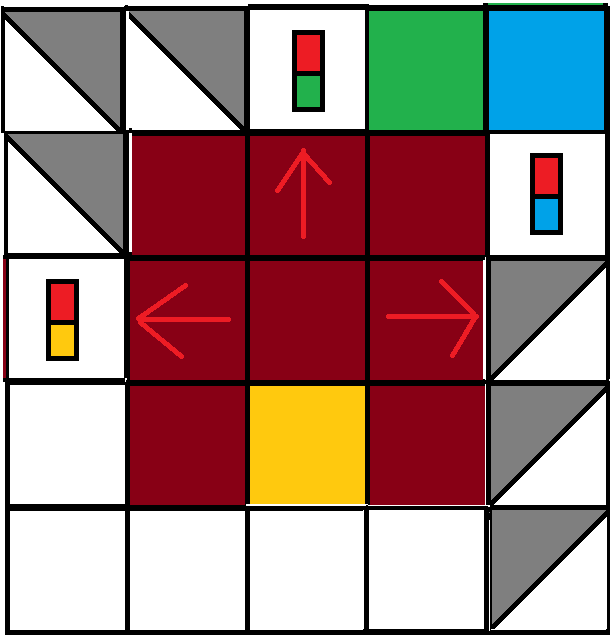Previous Level:- Lasers: An Easy Puzzle (Level $9$)
Rules :
Welcome to the 10th level of my puzzle series, and now we have colour converters!
- There will be lasers that are shaped like an arrow. The arrows pointing in the respective direction shows where the laser goes and the colour shows the colour which it gives out.
- There will be boxes that are respectively coloured and these boxes need to get touched by the lasers in order to find a solution. In order to find the solution, you can make a move by rotating or moving the lasers or the mirrors, or moving the grey tiles or the coloured boxes 90° clockwise.
- A mirror reflects a laser's path in exactly 90° angle clockwise or counter-clockwise, depending on the path. Double-sided mirrors can reflect 2 laser paths in 2 particular directions.
- Each box should receive the light of one single laser. In future levels, a box may receive the light of 2 or more lasers.
- Lasers(the arrows of the lasers) and Grey Tiles, along with the sides of the Mirrors would block other lasers' paths.
- (Bridges)/(Doubled-Bridges) have a specific colour to allow lasers to cross through a box from a particular direction from the same colour, or else it would block lasers from coming through other directions as well as lasers with different colours. Bridges cannot be rotated but in future levels, they may be rotated.
- Brown tiles (or tiles surrounded by brown lines) can neither be rotated nor be moved, they will be static.
- You can move objects (like lasers, mirrors, grey-tiles, bridges, etc.) such that they move as far as possible in the grid in a particular direction until they reach the edge, or they collide with another piece. Brown objects cannot be moved.
- Blue lines allow the movement of all pieces, but blocks lasers' paths, typically the same thing what a grey/brown tile does.
What's New:-
- From now on, we will have colour-converters. They change the colour of the laser passing through it, into another laser colour. Different laser colours cannot be converted by a specific colour-converter, instead they will get blocked. Colour-Converters can be rotated 90° clockwise . Here are some examples :-
Here is the puzzle for today, can you solve it? (Level 10)









